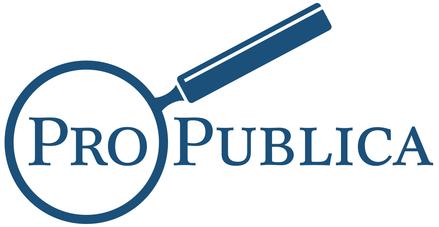Longform Journalism is simply a long essay. An article that is normally is between 1,000 and 5,000 words. In a magazine you would be looking for an article from 3 to 10 pages. Below are some magazines on the web that contain longform articles.
ProPublica
-
ProPublica ProPublica is an independent, nonprofit newsroom that produces investigative journalism with moral force. We dig deep into important issues, shining a light on abuses of power and betrayals of public trust — and we stick with those issues as long as it takes to hold power to account.
Longreads
-
Longreads Longreads, founded in 2009, is dedicated to helping people find and share the best storytelling in the world. We feature in-depth investigative reporting, interviews and profiles, podcasts, essays and criticism.
 "Longreads has been nominated for four National Magazine Awards and has been cited for digital excellence by the Online News Association and Peabody Awards. Our stories have been featured in the Best American anthology series, and our series “Bundyville,” with Leah Sottile and
"Longreads has been nominated for four National Magazine Awards and has been cited for digital excellence by the Online News Association and Peabody Awards. Our stories have been featured in the Best American anthology series, and our series “Bundyville,” with Leah Sottile and
Oregon Public Broadcasting, was named one
of the best podcasts of 2018 and won an
Edward R. Murrow Award in 2020."
New York Times (via PCC Database)
Longform
-
LONGFORM Longform.org recommends new and classic non-fiction from around the web.
The Atlantic
 WHO WE ARE
WHO WE ARE
"As we reflect on our past and look toward the future—in a world where ideologically narrow or simple answers are less adequate, and can even be more destructive, than ever—we decided to put to words a handful of ideas we thought represented authentic guiding commitments for us and to our audience."
-
The Atlantic (on the web) Since 1857, The Atlantic has been challenging assumptions and pursuing truth.
-
National Geographic (ontheweb) The National Geographic Society uses the power of science, exploration, education, and storytelling to illuminate and protect the wonder of our world.
-
National Geographic (InTheDatabases) Ethnic & Cultural Studies; Geography & Cartography Articles deal with interesting people, places, customs, activities and nature on a worldwide scale. Also covers National Geographic Society expeditions and discoveries.
Primary
Primary sources are original materials. They are from the time period involved and have not been filtered through interpretation or evaluation.
Examples:
- Artifacts (e.g. coins, plant specimens, fossils, furniture, tools, clothing, all from the time under study);
- Audio recordings (e.g. radio programs);
- Internet communication on email, twitter, social media, etc.;
- Interviews (e.g., oral histories, telephone, e-mail);
- Journal articles published in peer-reviewed publications;
- Letters;
- Newspaper articles written at the time;
- Original Documents (i.e. birth certificate, will, marriage license, trial transcript);
- Proceedings of Meetings, conferences and symposia;
- Records of organizations, government agencies (e.g. annual report, treaty, constitution, government document);
- Survey Research (e.g., market surveys, public opinion polls);
- Video recordings (e.g. television programs);
From: "Primary, Secondary and Tertiary Sources." Univeristy of Maryland, Univeristy Libraries. 1 March 2013. Web. 3 October, 2013.



